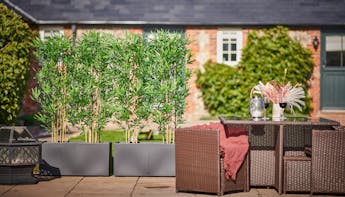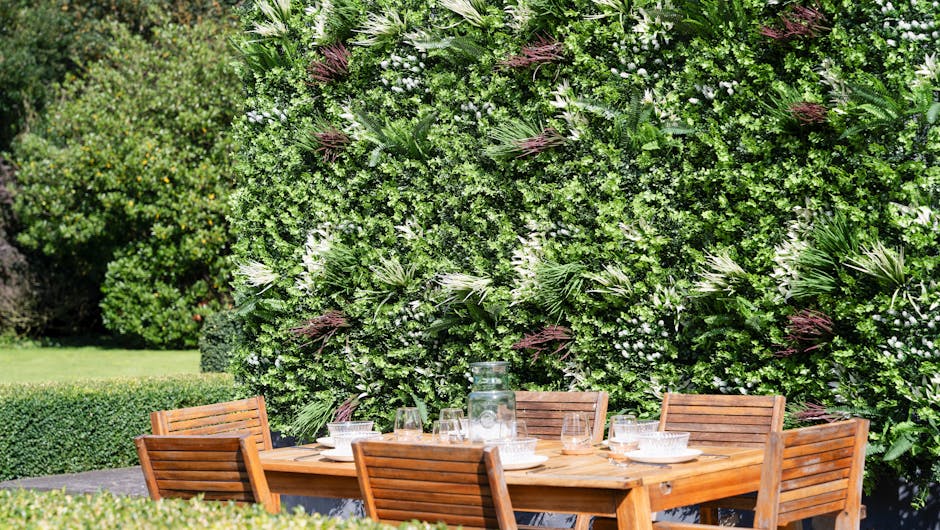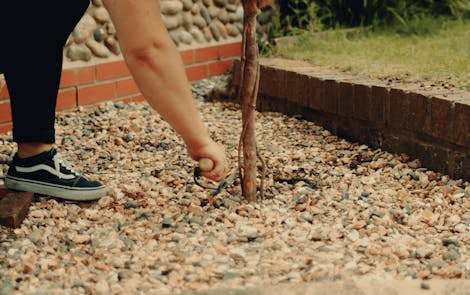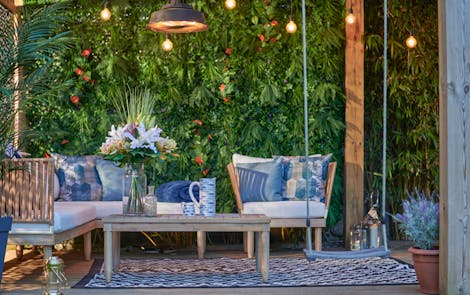How to plan & create the perfect artificial plant garden
A garden full of beautiful faux plants means there's no maintenance to keep your garden looking amazing. But, like any garden, proper planning is important!
Just a little hard work at first will result in an exceptionally low maintenance garden to enjoy. No pruning or feeding needed, plus it'll look great no matter how busy you are.
In this guide to planning and creating the perfect artificial garden, we'll share our expert advice on planning, designing and creating your dream garden. Read on...


Looking for artificial garden inspo?
For inspiration directly related to creating an artificial plant garden, explore our garden inspiration gallery.
Explore
Explore outdoor plants
Discover effortless outdoor faux plants, trees and flowers to brighten your outdoor space.
Take a lookBrowse artificial plants designed for outdoor use

Design your own winter arrangement
Create your own DIY hanging basket for the winter with these expert tips and tricks including, which colours to use for the winter, which flowers work best and more.
Read now
Shop faux hedging
Our range includes boxwood, cedar or buxus foliage hedging, which is handmade by our team and ready to go straight into your space.
Shop nowFaux plants are an excellent alternative when high maintenance plants just don't do the trick! Not only do they look fresh all year round, but they don't need any watering, pruning or fertilising to keep them looking their best, making them perfect for busy schedules, hard to reach spaces and those who struggle to keep natural plants alive.
Some artificial plants can go outside, but only if they're designed to do so. Outdoor artificial plants often include UV stabilisers to protect their colours from fading in the sun and are more typically designed to be more durable than indoor artificial plants. For more information, read our guide to UV protection.
Our artificial flowering bushes and shrubs all come with a short spike which you can push straight into the ground. Other plants and trees can be planted directly into soil too, but there are precautions to take for wood-stemmed trees to prevent any rotting.
It might be tempting to lay your patio on sand in a pinch, but doing so can cause your paving slabs to move underfoot and even crack as the sand provides a much weaker base than mortar. Instead, laying your patio on cement is the best option for the quality, long lasting finish.
Many people prefer the natural style of decking vs a patio or paving, with a choice of pressure-treated timber, composite and PVC decking to add style to your garden.
And while decking is ideal on sloped gardens and can bring a certain warmth to your space, it's also more expensive to maintain vs a patio.
With pressure-treated timber, your deck may rot without proper maintenance, including oiling, sanding, staining, and cleaning. Along with this, all decking runs the risk of fading in the sunlight and becoming slippery when it's wet.
Patios, on the other hand, are stronger, which means they typically last far longer than decking and can support hefty furniture including hot tubs. Unlike decking, they're also fireproof which is ideal if you plan on keeping a fire pit or something similar.
With a wide range of styles available, patios can suit any home and only need a yearly pressure wash to keep them clean. That said, patios may be more expensive to install and need a sturdy, level sub-base, which may require landscaping. This could be an issue if your space has underground pipes and cables.
Overall, decking requires more maintenance and is less durable than a patio, but is initially a more affordable option. Patios are initially more expensive to install, but once they're laid, they can last for hundreds of years with little maintenance.



































































































